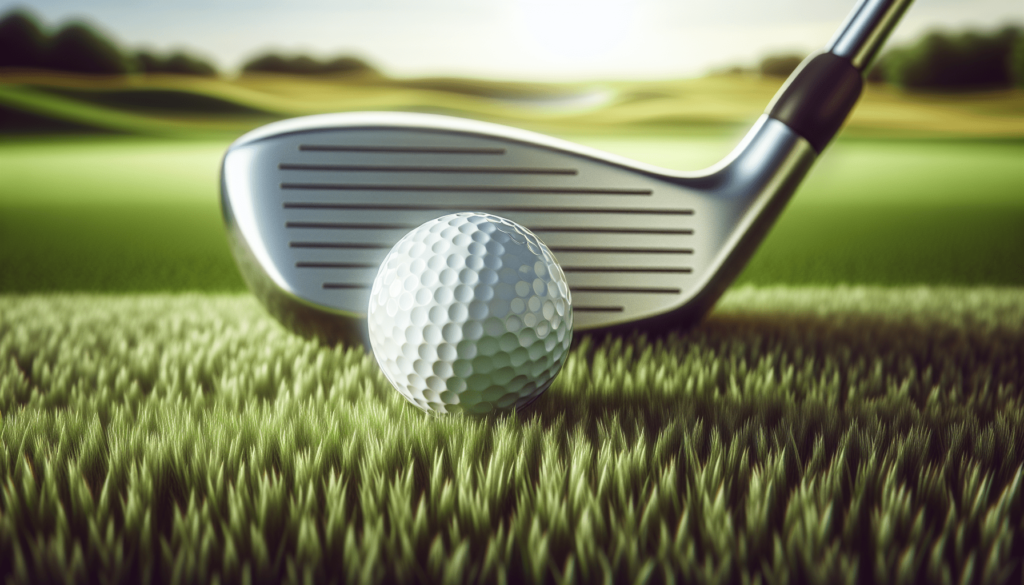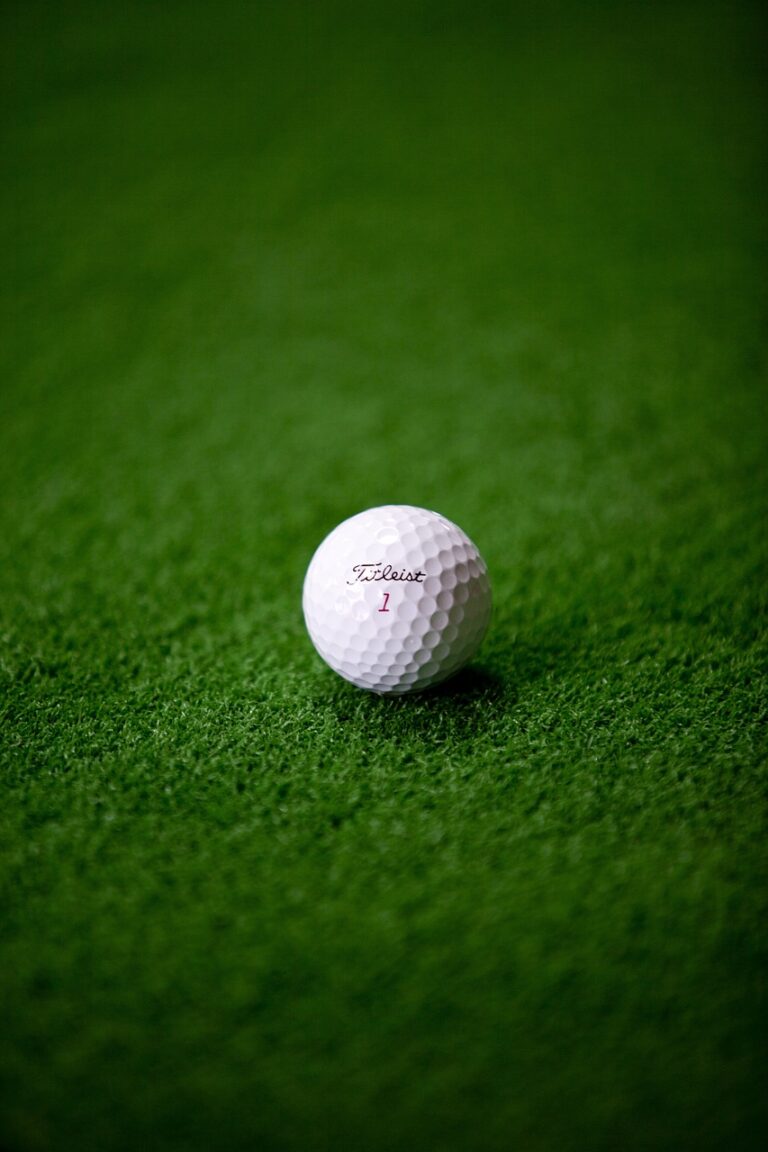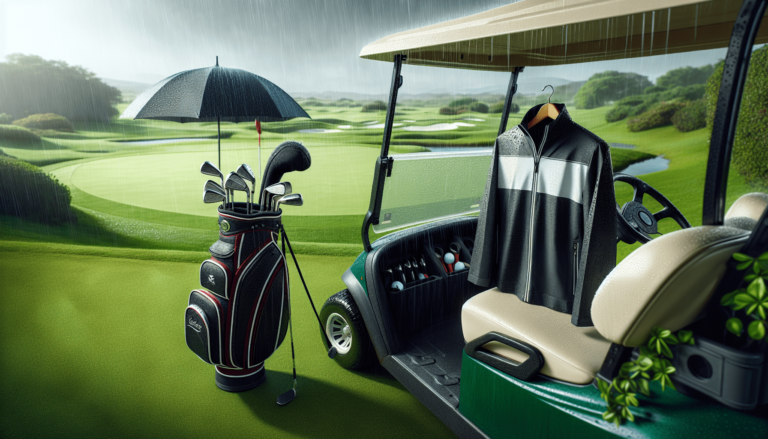The Best Golf Balls for Seniors to Improve Control
Have you ever wondered which golf balls can help you finesse your game as you get older? You’re not alone. Many senior golfers search for the perfect golf ball that offers better control, longer distance, and a more enjoyable golfing experience overall. Age doesn’t have to be a barrier to improving your golf game, and choosing the right ball can make a significant difference.
Why Golf Balls Matter for Seniors
You may think that any golf ball will do the job, but that’s not entirely true. The right ball can complement your playing style and physical abilities, making the game more enjoyable and effective. As a senior golfer, you might have noticed changes in your swing speed or endurance. Picking the right golf ball takes these factors into account.
Physical Changes and Game Adaptation
As you age, your strength and flexibility naturally change. These shifts can affect your swing speed and how far you can hit the ball.
| Physical Change | Impact on Game | Solution |
|---|---|---|
| Reduced Swing Speed | Less distance on shots | Low compression golf balls |
| Decreased Flexibility | Harder to achieve consistent swing | Softer feel golf balls |
| Decreased Stamina | Fatigue during game | Lightweight golf balls |
Importance of Control
Control becomes increasingly important as your physical abilities change. better control means fewer shots go astray, leading to lower scores and more enjoyable rounds. Lower compression golf balls can help you achieve this control by offering a softer feel and easier manipulation.
Factors to Consider When Choosing Golf Balls
Choosing the right golf ball involves understanding a few key factors that can influence your game. These aren’t just technical specifications; they directly affect how you perform on the course.
Compression
Compression rating indicates how hard or soft the ball is when struck. Lower compression balls are softer and easier to compress, making them ideal for senior golfers with slower swing speeds.
| Compression Rating | Feel | Ideal For |
|---|---|---|
| Low (50-70) | Soft | Seniors, Beginner, Slow Swing Speed |
| Medium (80-90) | Balanced | Average Golfer |
| High (100+) | Hard | Fast Swing Speed, Professional |
Spin
Spin affects how the ball behaves in the air and on the ground. Balls with higher spin offer better control but can be harder to manage, while lower spin balls provide more distance but less precision.
Construction
Different construction methods offer various benefits. There are two-piece, three-piece, and even four-piece golf balls, each with unique features suited to different types of golfers.
| Type | Description | Benefits |
|---|---|---|
| Two-Piece | Core and Cover | Distance, Durability |
| Three-Piece | Core, Mantle, and Cover | Control, Feel, Spin |
| Four-Piece | Inner Core, Outer Core, Mantle, and Cover | Advanced Control, Versatility |
Cover Material
The cover of the ball also plays a role in how it performs. Urethane covers offer better spin and control, while ionomer covers provide durability and distance.
Best Golf Balls for Seniors to Improve Control
Let’s go over some top recommendations that could be game-changers for you.
Titleist Pro V1
Titleist Pro V1 is a three-piece ball with a urethane cover, known for its excellent control and feel. It’s perfect for seniors who want to maintain precision in their game without sacrificing too much distance.
Pros:
- Great control
- Soft feel
Cons:
- Expensive
Callaway Supersoft
Callaway Supersoft golf balls have a low compression rating and offer a very soft feel, making them suitable for seniors with slower swing speeds. This ball promotes a higher launch and longer carry distance.
Pros:
- Affordable
- Increased distance
Cons:
- Less spin control
TaylorMade Kalea
Designed specifically for women, but equally beneficial for senior men, the TaylorMade Kalea offers easy launch and a soft feel. The two-piece construction aims for maximum distance with a low compression core.
Pros:
- Soft feel
- Excellent distance
Cons:
- Limited spin control
Bridgestone e6
The Bridgestone e6 is a happy medium between distance and control. Its low compression core makes it suitable for seniors, while the soft cover provides decent spin.
Pros:
- Balanced performance
- Soft feel
Cons:
- Not the best for very slow swing speeds
How to Choose the Right Golf Ball for You
Now that you’ve got an overview of what to look for and some top choices, let’s delve into a step-by-step guide on how you can make the final decision.
Assess Your Swing Speed
Knowing your swing speed can help narrow down your options. You can get your swing speed measured at most golf stores or use a personal launch monitor if you have one.
Determine Your Main Focus: Distance or Control?
- If Distance: Look for low compression, two-piece balls like Callaway Supersoft.
- If Control: Prefer medium compression, three-piece balls like Titleist Pro V1.
Test Different Balls
It’s always a good idea to test a few different types before settling on one. Many golfers find that a ball they thought would be perfect isn’t quite right once they’re on the course. Take a few different balls to the driving range and see how they perform.
Consider Spin Alternatives
If you find that controlling spin is particularly challenging, you might want to look into balls designed explicitly for reducing sidespin, thereby reducing hooks and slices.
Budget Matters
While some top-of-the-line balls can be expensive, there are plenty of affordable options that offer great performance. Knowing your budget can help you quickly narrow down your choices.
Practical Tips for Maximizing Control
Choosing the right golf ball is just one part of the equation. Here are some practical tips to further improve your control on the golf course.
Improve Your Stance and Grip
Your grip and stance can have a profound impact on your shot control. Make sure to maintain a neutral grip and a balanced stance to support a more controlled swing.
Work on Swing Consistency
A consistent swing technique can dramatically improve your control. Regular practice sessions focusing on swing mechanics can pay off in spades.
Utilize Training Aids
There are various training aids available that can help you understand and improve different aspects of your swing, from grip trainers to alignment sticks.
Regular Practice
The age-old adage “practice makes perfect” holds true in golf. Regular practice helps in building muscle memory and refining your swing mechanics, ultimately leading to better control.
Understanding Golf Ball Technologies
Getting acquainted with some of the technological advancements can also guide you in making an informed decision.
Multi-Layer Construction
Modern golf balls often feature multiple layers, each designed to serve a specific purpose. The core might be responsible for distance, the mantle for spin control, and the cover for feel. Understanding these aspects can help you choose a ball that complements your playing style.
Dimple Patterns
Dimple patterns affect aerodynamics. A well-engineered dimple pattern can reduce air resistance and improve flight stability. Different patterns suit different types of play.
Advanced Materials
Manufacturers often use high-tech materials in golf balls, such as urethane, which offers better spin control and feel. Some balls even feature innovative cores that respond uniquely to different levels of impact force.
Mental Approach to Improving Control
It’s not just the physical aspects of your game that matter; your mental approach can also play a significant role. Here are some strategies to keep in mind.
Stay Calm and Focused
A calm mind can lead to a more controlled game. Simple relaxation techniques such as deep breathing can help you stay focused.
Visualize Success
Visualization can be a powerful tool. Before taking a shot, try to imagine where you want the ball to go. This mental picture can guide your physical actions.
Develop a Routine
A pre-shot routine helps to stabilize your performance. Whether it’s a specific number of practice swings or a set order of steps, developing and sticking to a routine can make your shots more consistent.
Taking Care of Your Golf Balls
Believe it or not, how you take care of your golf balls can also affect your game. Proper maintenance can ensure the ball retains its quality and performance features for as long as possible.
Regular Cleaning
Dirt and debris can affect the aerodynamics and feel of the ball. Carry a simple cleaning cloth or use the ball washers located on the course.
Inspect for Damage
Regularly inspect your golf balls for any cuts, nicks, or other damage. A damaged ball can behave unpredictably.
Storage
Store your golf balls in a cool, dry place. Extreme temperatures can affect the materials and compromise performance.

Conclusion
The right golf ball can make a world of difference in your game, especially if you’re a senior looking to improve control. By understanding the factors that affect performance, from compression to cover material, you can make a more informed choice. Testing different options, considering your specific needs, and incorporating practical tips into your game will help you find the perfect match. Don’t let age hold you back—it’s never too late to achieve better control and enjoy the game even more.







